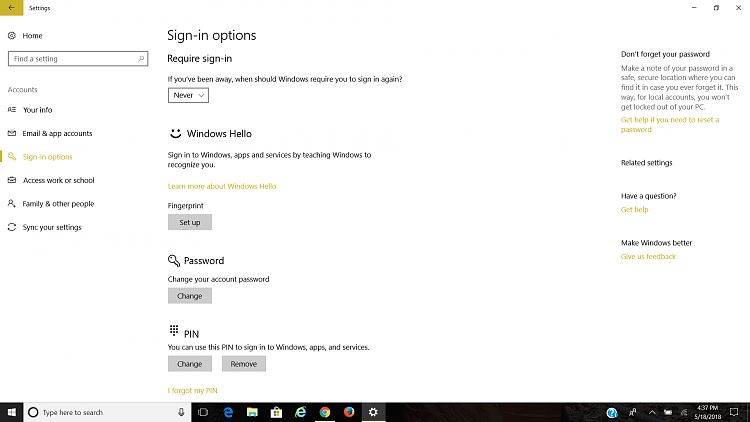Ruling Input Devices Driver
One of the first decisions to come out of the B.C. Supreme Court this year has to do with the hot-topic issue of distracted driving. This week, the case of R. v. Bleau further defined the parameters of what exactly constitutes distracted driving—and just as importantly—what doesn’t.
- Ruling Input Devices Driver License Test
- Ruling Input Devices Drivers
- Ruling Input Devices Driver
- Ruling Input Devices Driver Updater
- Ruling Input Devices Driver Device
The facts of the case involved a man, appealing a decision from a lower court wherein he had been convicted of using an electronic device while driving.
PCI driver: Puts the device in D0 using PCI-PM registers and restores Plug and Play configuration (interrupts and BARs-these might be different from what the device was previously on). Device driver: Restores proprietary context in the device. Scenario 3: Enabling wake-up. Device driver: Sets proprietary registers in the chip to enable wake-up. For example, in pattern matching network wake-up, this is. Windows may install drivers for select devices, say the graphics card, under certain circumstances. This happens by default for instance when the device is setup, but may also happen when Microsoft pushes driver updates through Windows Updates. Input Output Audio Driver Controller is an application designed to help you view the input and output drivers of the sound cards you have installed on your computer.
While not a criminal offence, tickets under section 214.2 of the Motor Vehicle Act can carry some serious consequences for those who receive them.
Aside from a hefty fine, four driver penalty points will be applied to the driver's record. Drivers risk premium penalty payments.
Moreover, it could—and often does—result in a driving prohibition, which could last upward of two months, depending on the recipient's driving history. For that reason, those who receive tickets are often motivated to dispute them.
Bleau elected to dispute his ticket—not just because of the harshness of the associated penalties—but also because he did not feel that he had contravened the law.
At trial, the evidence showed that Bleau had been playing a podcast through the speakers of his vehicle’s sound system, which was linked wirelessly by way of a Bluetooth connection. However, the complicating factor was that the phone was not secured or mounted in the vehicle. Instead, it was sitting in the center cup holder.
Bleau was convicted on the basis of the phone not being firmly affixed to the vehicle. The judicial justice described this as a “technical” violation of the Act.

Ruling Input Devices Driver License Test
The B.C. Supreme Court Judge, however, did not agree.
Justice Peter Voith described this type of conduct as “passive use”, electing to draw a distinction between prohibited and nonprohibited forms of “use” while driving. Simply using a device by passively listening to an audio broadcast that is initiated through a cellphone, being played through a hands-free system, does not constitute a prohibited form of “use,” even if unsecured, he ruled.
In arriving at this interpretation of the law, the judge focused on the practical intent of legislators when crafting the law and their focus on reducing the threat of distracted driving.
We must remember that distracted driving laws weren’t passed without reason. They were passed to enhance road safety.
They are in place to address concerns around this issue, alongside advancements in technology, which are now largely available to most people most of the time, including while behind the wheel of a motor vehicle.
There is little doubt that distracted driving poses a significant threat to public safety and that divided attention tasks—like driving—are best performed without the additional distractions that cellphones so often bring.
Distracted driving increases the risk of accidents exponentially. The Canadian Automobile Association reports that a driver is 23 times more likely to become involved in an accident if they are texting and driving. The injuries and property damage resulting from such accidents could be catastrophic in nature.
The bottom line is that drivers should be expected to keep their hands on the wheel and their eyes on the road while driving. And, ultimately, this is the bright-line, down-to-earth principle that led the court to agree with Bleau and to overturn his conviction.
It is also a common-sense application of the law that provides some much-needed clarity to an often-misunderstood section of the Motor Vehicle Act.
The law around distracted driving has been a work in progress since its introduction. There has been no shortage of cases, working their way through various levels of courts over the last few years. Some have been more instructive than other.
And while the law has been subject to criticism for being overly ambiguous, confusing or poorly drafted, the simple fact is that lawmakers were tasked with a complicated matter when it came to legislating this issue.
The glacial pace of advancements in the law, and the often-rigid confines of it, which sits in stark contrast to lightning-speed developments in ever-fluid technology, was just one challenge for them to consider.
Ruling Input Devices Drivers

Creating laws to adequately protect the public from the dangers that could arise from technology, as the technology in question continues to develop and evolve, certainly cannot be a straightforward endeavour. But now, thanks to this latest ruling from our courts, the application of those laws may be.
Ruling Input Devices Driver
After all, it takes time for new laws to be enacted, applied, challenged, and interpreted by the judiciary.
Distracted driving laws are no exception.
Ruling Input Devices Driver Updater
MoreRuling Input Devices Driver Device
